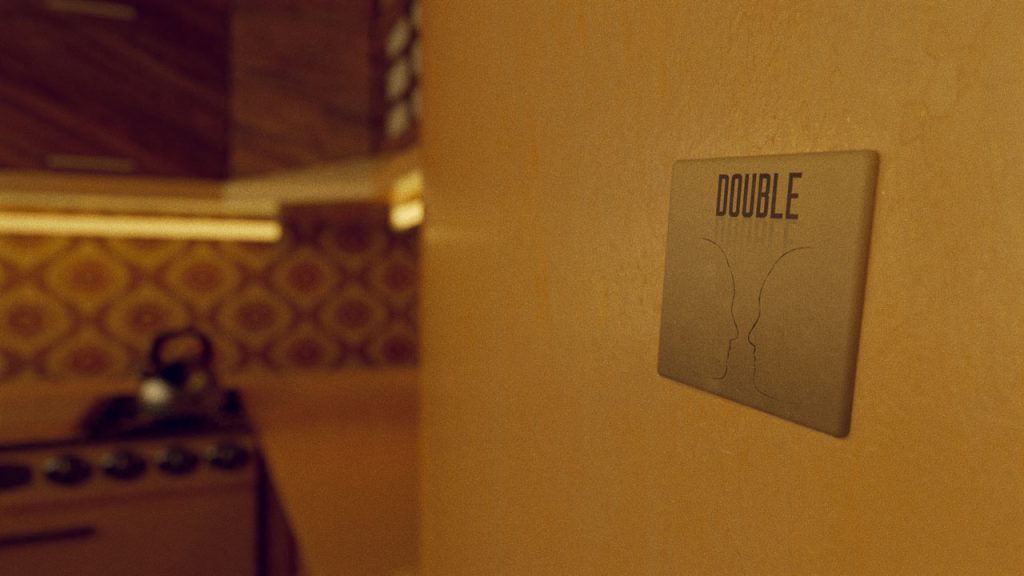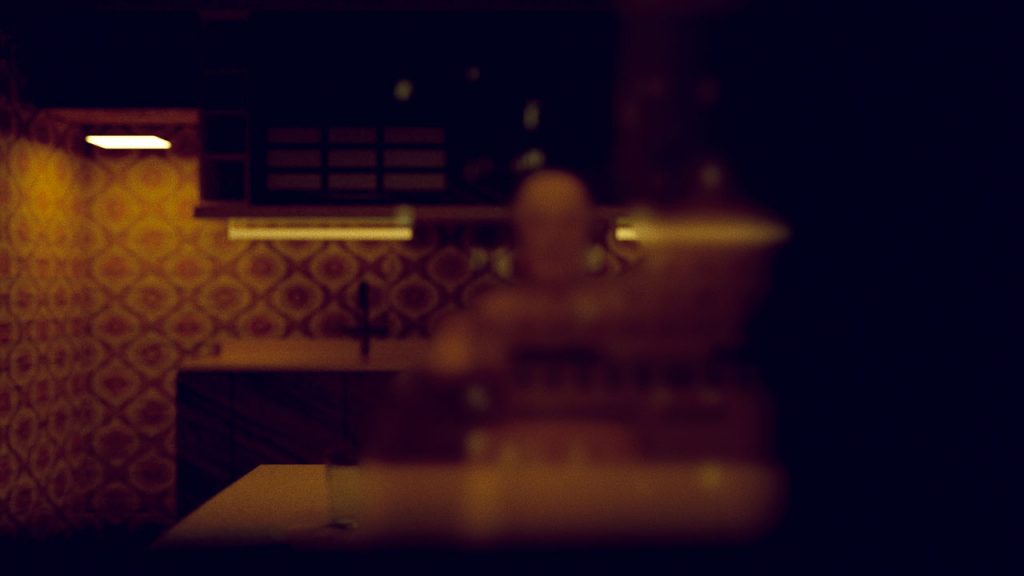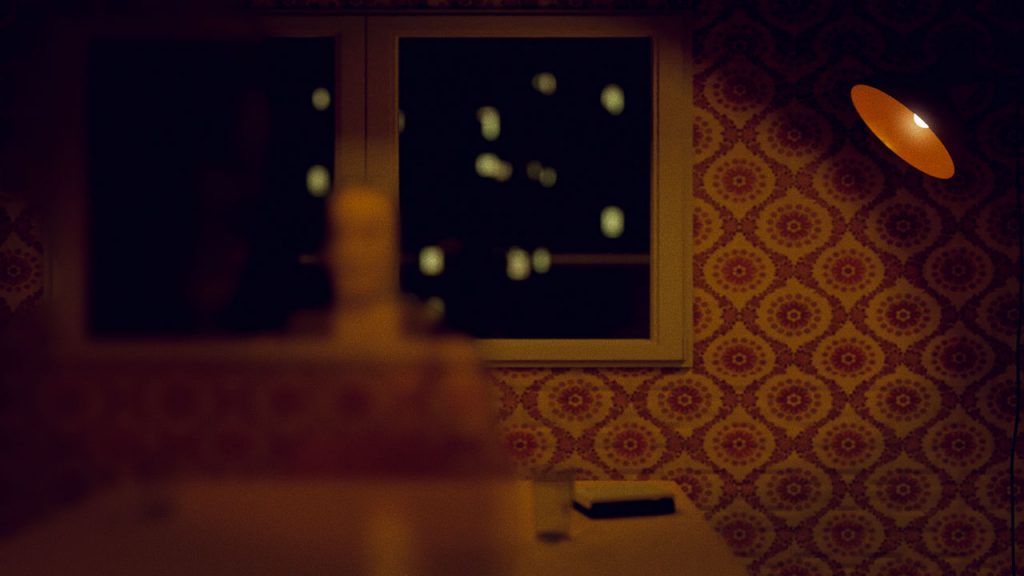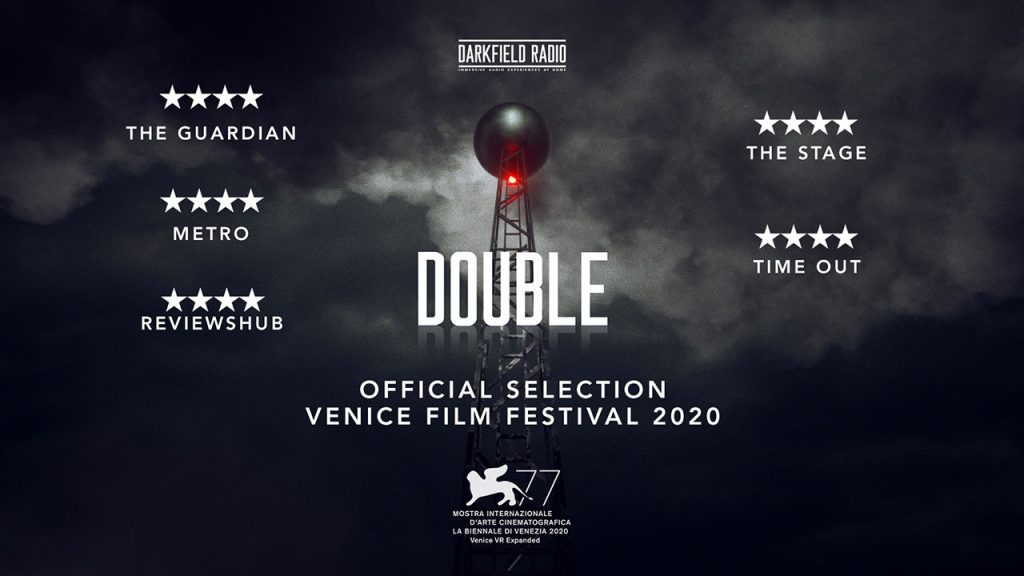DOUBLE, the first installment of DARKFIELD RADIO, was the first audio-only work presented at the Venice Film Festival. Find out more about it in our interview to Glen Neath, artistic director at DARKFIELD.
I have recently become a big fan of a podcast called The Magnus Archives. My first podcast ever, and I’ve never been used to audiobooks either. A good choice, to start with that, though: that show is a disquieting trip through people’s biggest fears, and it’s amazing how something becomes even creepier when sounds are the only thing that conveys it.
From this to DOUBLE, the step was a small one. DOUBLE is a work whose storytelling is entirely based on a vivid use of sounds. They are familiar sounds, nothing we’ve never heard before. But the subtle way in which these common sounds are used to tell of a mounting obsession makes them disturbing harbingers of violence.

On the other side, its content is perfect to be expressed only through sounds: DOUBLE is a reflection on the Capgras delusion, a psychiatric disorder that makes the sufferer believe those close to him have been replaced by replicas with evil intentions.
A fascinating but also unsettling concept. DOUBLE asks you to face it while sitting at a table together with a partner of your choice. And while it does not convince you that your partner is not who you always thought they were, it’s a setting that certainly makes the experience much more immersive.
The accessibility of DOUBLE
To further inspire my curiosity, in 2020 the Venice Film Festival included DOUBLE in the lineup of their 2020 Venice VR Expanded section (Best of VR – Out of Competition, x). The first time ever La Biennale chooses a work that is not made by images.
The Venice VR Expanded has not been the easiest thing to travel through, this year, especially to newbies. Many people had problems accessing VR Chat, where the event virtually took place, because of bad Internet connections and sometimes even because of hardware requirements that were too high.
So when you notice a work that just asks for a kitchen table, headphones, a phone and for you to close your eyes, you jump in.
Indeed the accessibility is so easy that many people I talked with decided to join the event even if their interest in unusual immersive experiences is practically null.
Reactions were interesting to observe: they went from nervous laughing to silent concentration to upset responses. One couple who told me about their experience tried DOUBLE in an unfamiliar kitchen and with no one else in the house. They got very nervous at the idea that someone was actually there, making those noises around them, even if they were consciously aware that it was not possible. But a slight doubt remained and at one point they both hid their faces behind their hands so not to inadvertently open their eyes to check.
At the origins of DOUBLE
DOUBLE is the first installment of the DARKFIELD RADIO project by DARKFIELD, a company which defines itself as a “multi-sensory sonic theme park” (see official website).
It sees the participation of a team of artists who created interesting (…and unnerving) audio shows. Among them, Ring (2013), Fiction (2015) but also Sèance, Flight and Coma, productions that work with binaural sound and absolute darkness.
DOUBLE is partially different: it does not need you to go somewhere to experience it, but comes directly into your own home and tries to capture its spirit. A choice that we discussed with artistic director of DOUBT, Glen Neath.
Glen Neath – We were thinking about the platform before COVID-19 closed down our location-based shipping container shows, but the pandemic certainly brought it to the forefront of our minds. We were keen to create a piece that reacted to the new situation rather than make our other shows available for download.

G. N. – The audience’s position in relation to the narrative is key in all our work – we always try and make them the protagonist in the story – and so our first consideration had to be about how to deal with the new circumstances. For DOUBLE, we could no longer rely on complete darkness, which is something we use in all our other work, and the set had to be generic enough for every audience member to feel it was real for them.
An insight on the psychology of doubt
G. N. – We chose to make DOUBLE for two people because we felt this would help maintain a sense of the ‘live’ event. So we were able to create an audience configuration, which was one of the only certainties we had to play with, two people sitting opposite each other, and this was key to the way we explored Capgras delusion. The piece actually became more about the slipperiness of the certainties we all have about the world we live in and the delusion became more background noise within the piece.
G. N. – It was always going to be impossible to place the audience member into the role of a person suffering from the delusion but we felt that we could have them ask questions about how well they really knew their loved ones and their surroundings. Asking the audience to close their eyes came out of this and so was embedded within the narrative.

The audience at the centre of the story
G. N. – I’ve been working with David Rosenberg (a/n artistic director at DARKFIELD) for about 10 years, making shows using binaural sound and complete darkness. It’s a completely collaborative enterprise and whilst I lead on the writing side and David the sound and editing, we are both very much involved in the whole process.
G. N. – Ideas for shows come from a variety of sources: a thought about design, a philosophical idea, but they are always centred around the audience experience and their position at the centre of the story. We never write plays and then stage them. The text serves the concept the same as the design and the choice of props (for example, what will sound good).

G. N. – The challenges we face by placing the audience so much at the centre was amplified by the pandemic: we were no longer able to rely on complete darkness to disorient them, and the thinking around DOUBLE was always about how to invite the audience to close their eyes and keep them closed. We also had to understand how we could create a set for the piece that could be relevant to everyone listening to it.
A new direction for festivals and for the audience
G. N. – Liz Rosenthal, one of the curators of Venice VR Expanded, became aware of our work through the Creative XR Digital Catapult programme that we were involved with last year. Interestingly we have since been contacted by three other film festivals and will be premiering our next piece at one of them.
G. N. – The response we have received for DOUBLE has been amazing. The reviews have been very positive and some audiences have even described it as more effective than the container shows due to the particularly unsettling feeling of their own home being transformed.

DOUBLE is currently open to the audience, with recorded performances every night at 20.00 and 21.30 (visit DARKFIELD RADIO website to book your ticket).
Furthermore from October you’ll get to enjoy the new show, VISITORS, that was selected for the Raindance Immersive lineup (x). Once again DARKFIELD will visit your home and the living room will never be the same.



Leave a Reply
You must be logged in to post a comment.